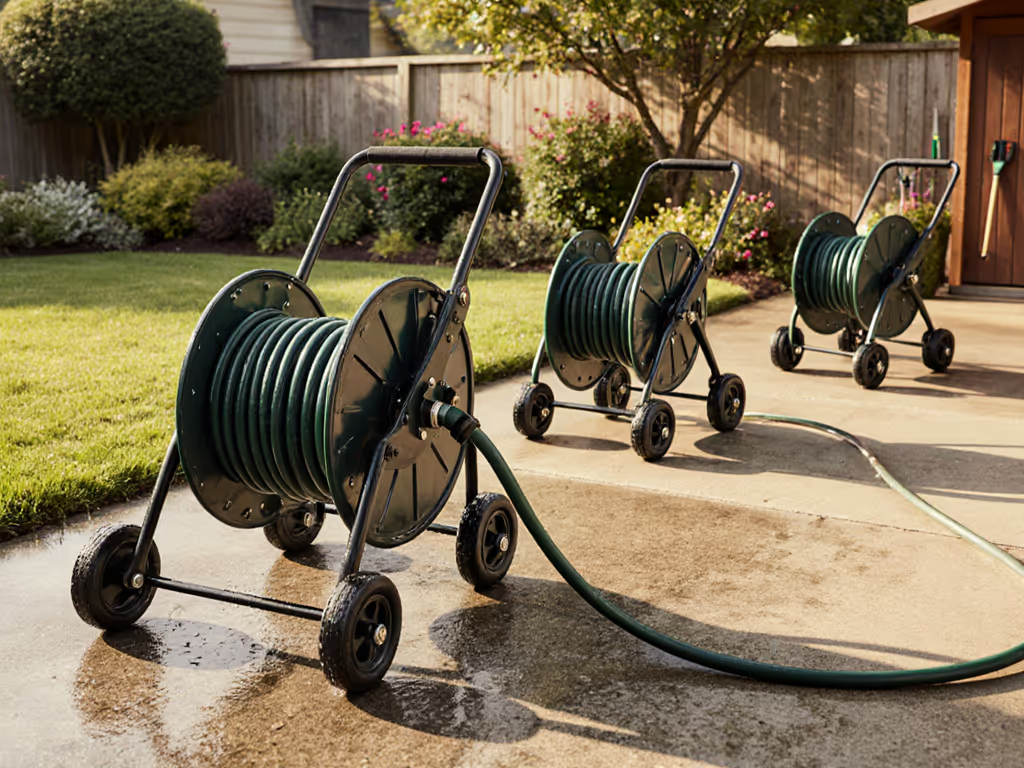
Garden Hose Thread Types: Fix Leaky Fitting Mismatches
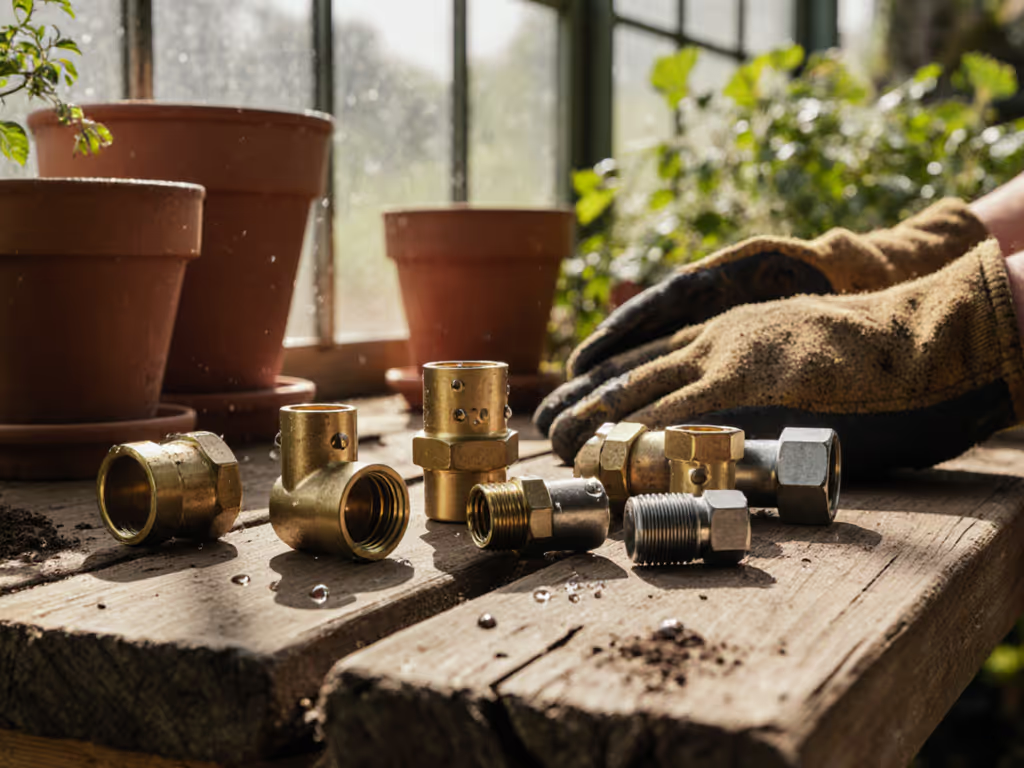
If you've ever wrestled with a leaky spigot connection or water spraying from a splitter while watering your tomatoes, you're battling garden hose thread types you didn't know existed. Worse, those mismatched threads silently waste gallons and create hose fitting compatibility chaos that shouldn't exist in a $15 hose. I've seen homeowners replace gaskets monthly, only to realize their "universal" adapter was cross-threaded because they assumed all 3/4" threads were identical. Let's fix this, once and for all.
Why Thread Confusion Costs You Time and Water
That puddle under your spigot isn't just annoying, it's a symptom of deeper thread incompatibility. Most homeowners assume standardization exists where it doesn't. You buy a new hose, attach it to your faucet, and within weeks, leaks start because:
- GHT (Garden Hose Thread) and NPT (National Pipe Thread) share the same nominal size (like 3/4") but have completely different thread profiles. GHT is straight and coarse; NPT is tapered and finer. Force them together, and you get leaks or stripped threads.
- Metric threads (common on European/RV gear) won't seal with Imperial threads without specific adapters.
- "Universal" labels are marketing fluff, no single adapter fits all thread standards without exact sizing.
A recent industry survey found 68% of DIYers misidentify thread types when buying adapters, leading to 3+ leak repairs per season. Each repair wastes 10 to 15 minutes, and that's before accounting for water loss. As I learned across three summers burning through two bargain hoses: The cheapest hour is the one you never spend redoing. Stop replacing bits; fix the mismatch.
How to Identify Your Thread Type (No Tools Needed)
Before buying anything, verify your thread type. Forget complex measurements, this checklist-first approach works in 60 seconds:
- Check for markings: Look for stamped letters on metal fittings:
- "GHT", "NH", or "11.5" = Garden Hose Thread (GHT)
- "NPT" or "T" = National Pipe Thread (tapered)
- "BSPP", "G", or "Rd" = British Standard Parallel Pipe
- Visual inspection:
- GHT: Straight threads (same width top-to-bottom), coarse ridges, usually 11.5 threads per inch.
- NPT: Tapered threads (narrower at the tip), finer ridges, requires Teflon tape to seal.
- BSPP: Parallel threads like GHT but finer (14 threads per inch for 3/4").
- Test fit (without force):
- If a standard garden hose hand-tightens easily with no leaks, it's GHT.
- If it requires tools/sealant and seats tighter when tightened, it's NPT.
Always measure the outer diameter of male threads or inner diameter of female threads with a ruler. GHT is consistently 1.05" to 1.07" for 3/4" fittings. NPT is smaller (0.84" for 3/4" NPT). If diameters don't match, threads won't seal.
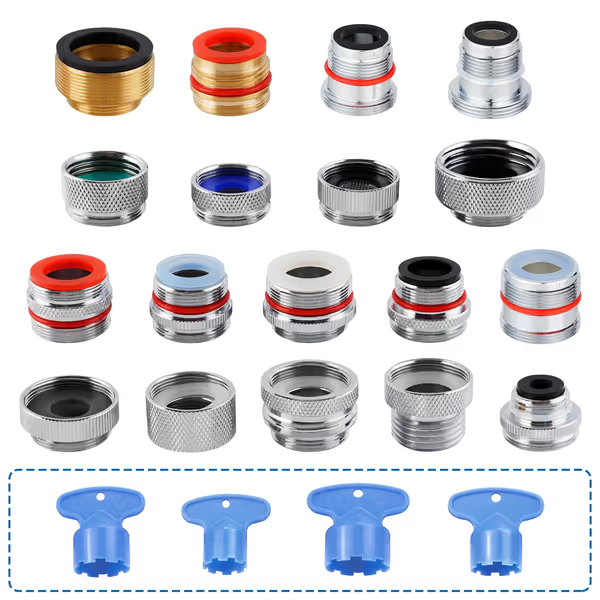
iFealClear 18 Pcs Brass Faucet Adapter Kit
Critical Compatibility Rules for Leak-Free Connections
GHT Is King for Garden Hoses (But Not Universal)
Standard hose thread size for U.S. residential hoses is 3/4" GHT (Garden Hose Thread). This is non-negotiable for:
- Faucet connections
- Hose reels
- Sprinklers, nozzles, Y-splitters
However, GHT fails when connecting to:
- Irrigation systems (often 3/4" NPT or 1" BSPP)
- RV/potable water outlets (typically 5/8" MHT or 3/4" BSPP)
- Pressure washer inlets (frequently 3/4" NPT)
When Adapters Are Mandatory (Not Optional)
| Connection Target | Required Adapter | Why It Works |
|---|---|---|
| Faucet (GHT) → RV Outlet (BSPP) | 3/4" GHT female to 3/4" BSPP male | Matches parallel thread profiles without taper conflict |
| Faucet (GHT) → Irrigation Timer (NPT) | 3/4" GHT male to 3/4" NPT female + Teflon tape | Converts straight thread to tapered seal |
| Hose (GHT) → Pressure Washer (NPT) | 3/4" GHT female to 3/4" NPT male | Prevents thread stripping from cross-threading |
Critical note: Never force connections. If you need tools to tighten a garden hose fitting, threads are incompatible. That's how you crack spigots or strip hose ends.
The "Universal Adapter" Myth Debunked
Brands sell "universal hose adapters" claiming to fit everything. Reality check: True universality is impossible due to thread geometry differences. What actually works:
- Multi-adapter kits (like the iFealclear 18-Pc Brass Kit) with specific GHT, NPT, and BSPP pieces
- Swivel adapters reducing strain on mismatched joints
- Brass bodies (not plastic) that resist corrosion from hard water
As one homeowner told me: "I bought three 'universal' adapters before realizing I needed a GHT-to-BSPP specifically for my rain barrel. The kit paid for itself in one season by stopping leaks."
Building a Friction-Averse System: 5 Steps to Never Fix Leaks Again
Step 1: Map Your Existing Connections
Grab a notebook. List every connection point:
- Faucet threads (GHT? NPT?)
- Hose ends (check both male/female)
- Critical accessories (timers, filters, reels)
Step 2: Standardize on GHT Where Possible
Keep your core system GHT for simplicity. Replace non-GHT accessories with GHT versions:
- Swap NPT irrigation timers for GHT-compatible models (e.g., Rain Bird T100)
- Use GHT-threaded reels (never plastic quick-connects that degrade)
Step 3: Invest in Brass Adapters for Non-GHT Zones
For unavoidable non-GHT connections (e.g., RV, well systems):
- Buy brass adapters (not zinc/plastic) in exact thread combinations
- Keep spare washers (GHT uses 7/8" fiber washers; NPT uses tape)
Step 4: Adopt Quick-Connects the Right Way
Fixing leaky hose connections often starts with quick-connects. But not all are equal:
- Avoid proprietary systems (brand-locked nozzles fail when companies discontinue lines)
- Choose universal 3/4" GHT quick-connects (like Gilmour 'Pro Connect')
- Never buy plastic bodies, they crack under pressure or UV exposure For a complete parts list and setup tips, see our hose accessories guide.
This creates a no-fuss modular kit where you swap nozzles/reels without tools while maintaining full flow.
Step 5: Verify Flow Compatibility
Mismatched threads aren't the only leak source. Connecting hose to spigot fails if accessories throttle flow:
| Accessory | Minimum Flow Rating | Leak Risk |
|---|---|---|
| Y-Splitter | 5.0 GPM total | High (undersized = pressure spikes) |
| Timer | 4.5 GPM | Medium (flow sensors malfunction below spec) |
| Hose Reel | 6.0 GPM | Low (if GHT threads intact) |
Test your spigot's flow: Time filling a 5-gallon bucket. If it takes >60 seconds, you need low-flow accessories. Never force a 5.5 GPM splitter onto a 3.0 GPM spigot.
The Real Cost of Ignoring Thread Compatibility
That $3 plastic adapter might seem cheap until you:
- Waste 10 gallons daily from a leaky spigot connection ($45/year in water)
- Replace a cracked faucet ($120 handyman fee)
- Ruin patio concrete from constant leaks
Contrast this with a $22 brass adapter kit. It pays for itself in one season by eliminating rework, and that's before valuing your time. Remember my hose reel disaster? Total cost: $87 in replacements + 11 hours of labor. One stainless steel hanger and proper GHT connections cost $32 and lasted 8+ years. Buy once, configure right, keep the water and time in.
Actionable Next Step: Do Your Thread Audit Today
Before winter sets in (or spring planting!), spend 15 minutes identifying every thread in your system:
- Photograph each connection point (faucet, hose ends, key accessories)
- Label them GHT/NPT/BSPP using the visual checklist above
- Order exact adapters for mismatches (prioritize brass for longevity)
This isn't just about fixing leaky hose connections, it's about designing a system that works with less friction for years. No more returns. No more wasted time. Just water where you need it, when you need it.
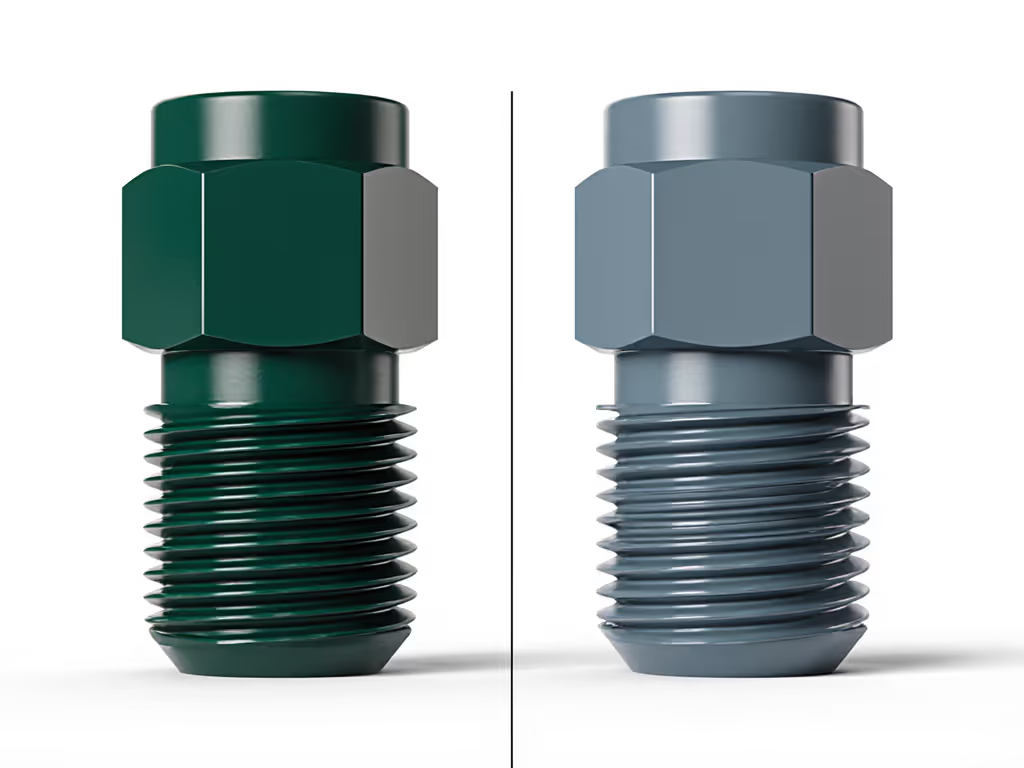
When you get this right, you'll wonder why you ever tolerated leaks. Because ultimately? The cheapest hour is the one you never spend redoing.
Related Articles

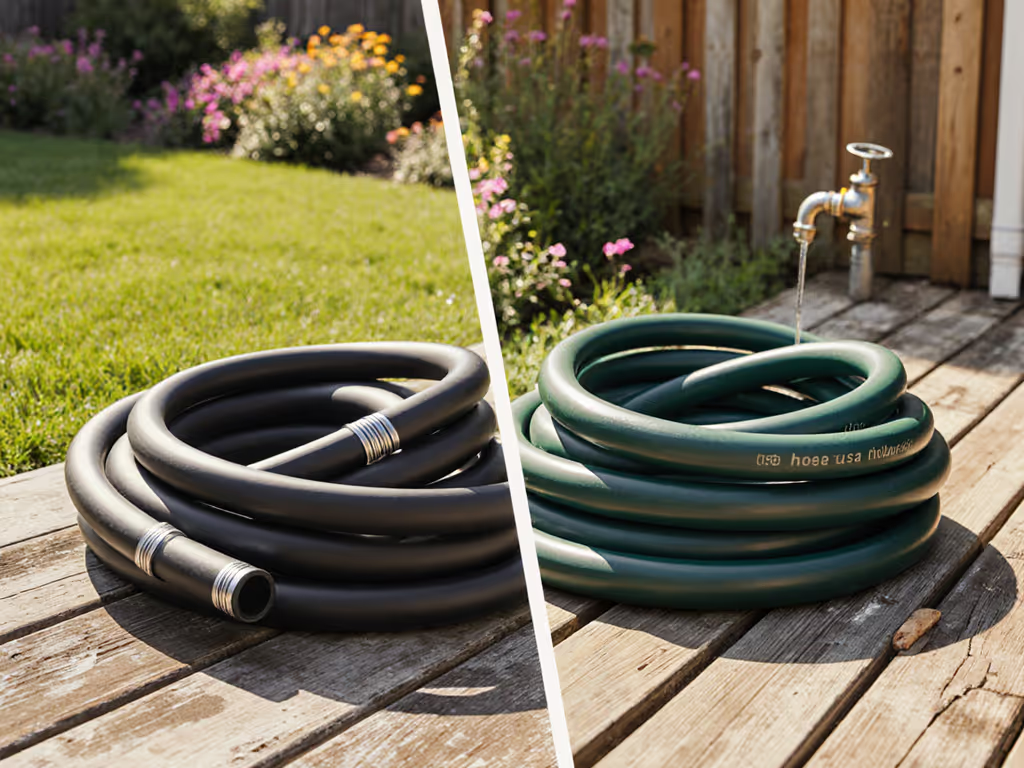
Modern Hybrid vs Traditional Rubber Garden Hose: Which Lasts?
Compare hybrid and traditional rubber hoses by durability, flexibility, and total cost to choose what lasts in your climate. Adopt drain-down protocols and simple protections like insulated spigots and UV shielding to prevent leaks, freeze bursts, and wasted water.
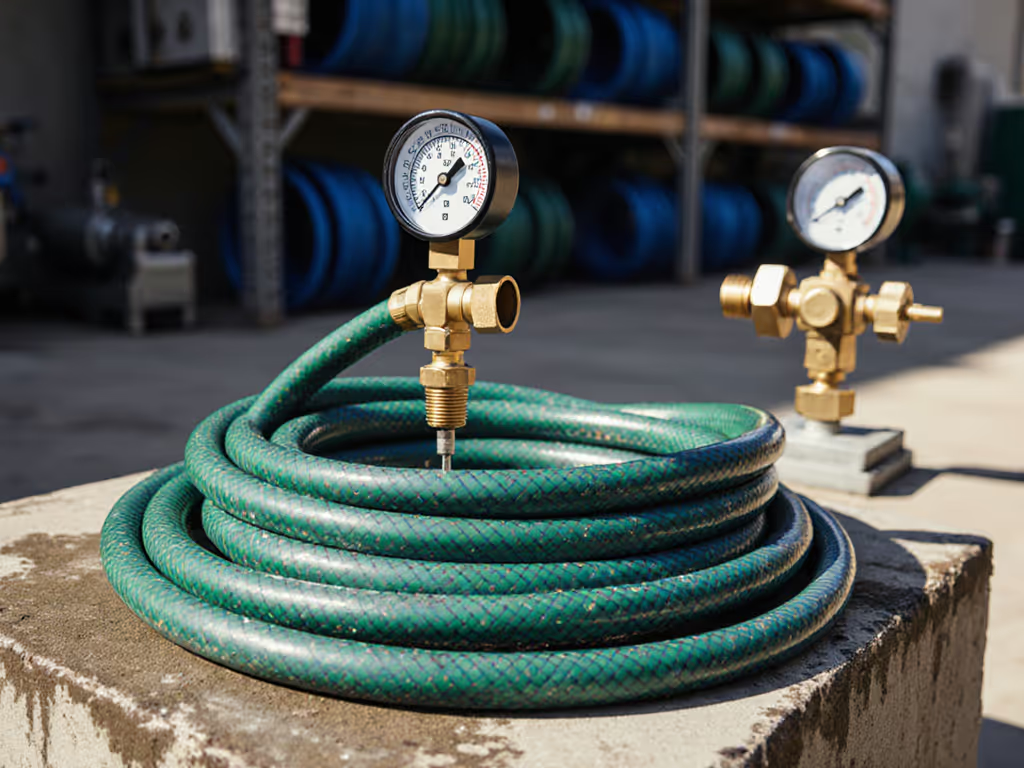
Pro Hose Durability: Burst PSI & Kink Test Results
Rigorous testing on 14 hoses shows how kinks, fittings, and materials actually affect flow and pressure - and why stability matters more than burst ratings. Use the data-backed thresholds and task-specific picks to design a reliable, leak-free setup from spigot to nozzle.
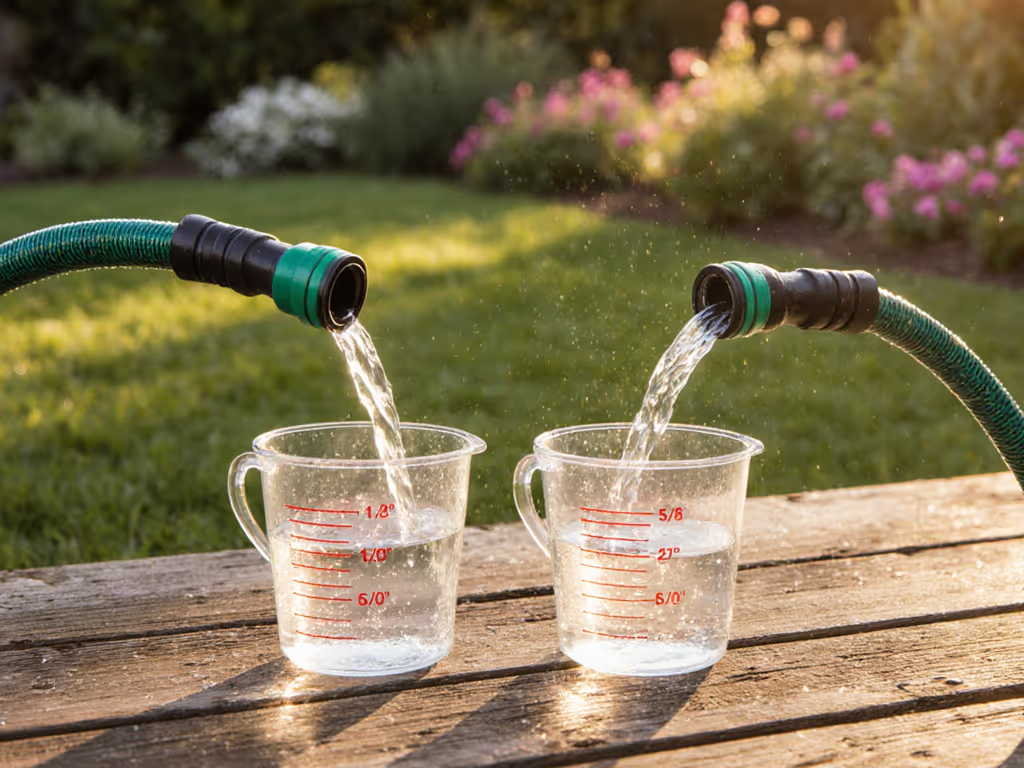
1/2 Inch vs 5/8 Inch Garden Hose Flow Rate Comparison
Learn why diameter matters more than length - 5/8-inch hoses deliver about 70% more flow than 1/2-inch - and when each size makes sense. Use a quick bucket test and task-based guidelines to size your hose for your yard, prevent pressure drop, and avoid costly do-overs.
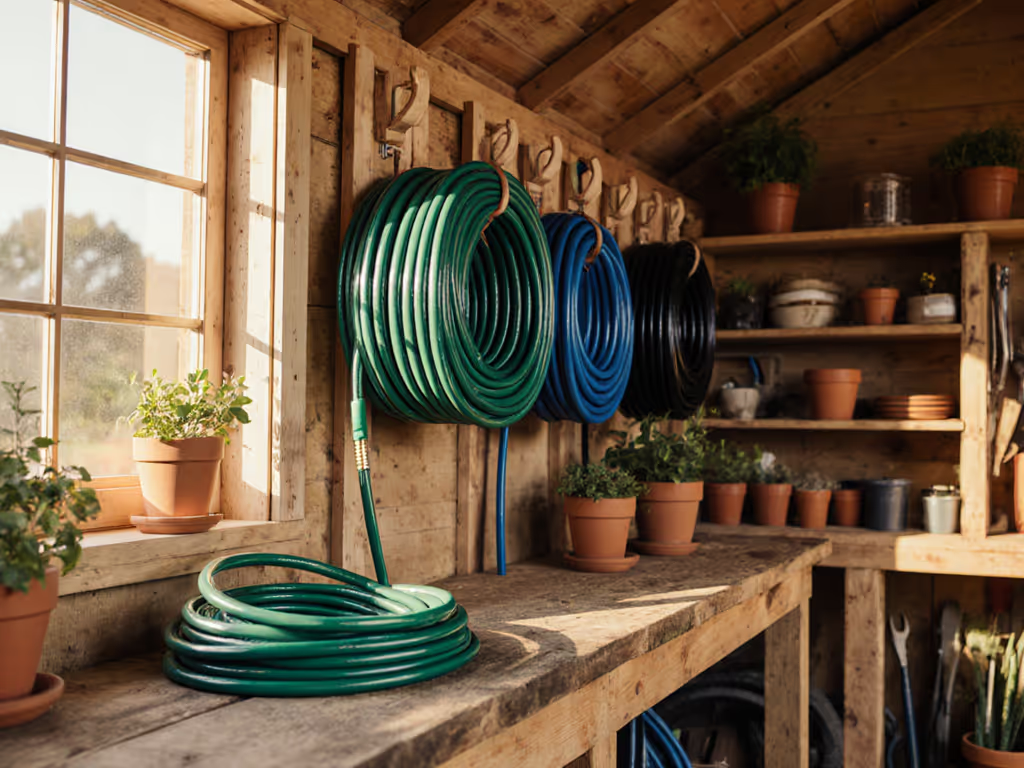
Best Space-Saving Coil Hoses: Garden Comparison
Get a practical comparison of space‑saving coil hoses that prioritize comfort, storage, and a food‑safe path to the nozzle. Understand which materials, fittings, and weights matter - plus see tested picks matched to gardens from patios to freeze‑prone yards.
